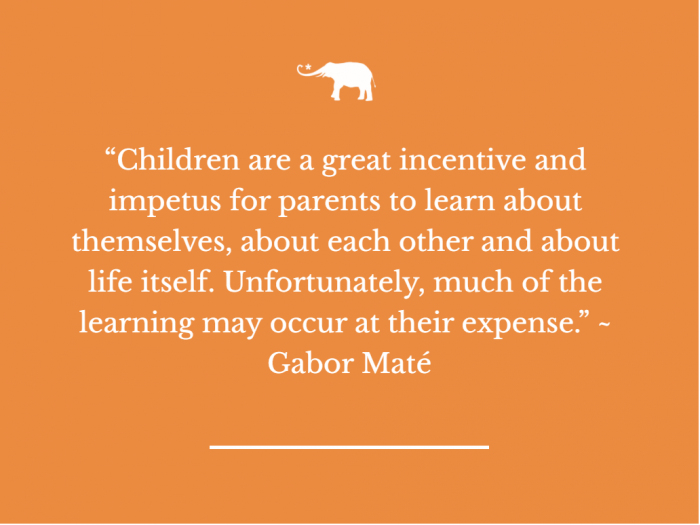
“This isn’t working, I wish you the best of luck,” I texted him.
It ended the same way as all my previous relationships.
For the weeks prior to termination, my body felt as though I had taken a sharp, deep inhale and was holding my breath: the mounting internal physical pressure along my upper back ribs, bloated lower abdomen, and stiff neck accompanied a growing sense of panic, desperation, and urgency.
I felt like I was physically suffocating, and I chose to exit when the need to breathe became more important than the need to maintain the relationship.
Intense relief mixed with deep grief and sorrow: I couldn’t understand how I could crave something so deeply, yet be so physically overcome by it.
I couldn’t figure out what the f*ck was wrong with me.
And nobody would tell me what it was.
When we have deep longings and an ever-present void within that we can’t seem to fill in adulthood, we often find ourselves cycling through the same problems with different solutions that never reach a true resolution.
We may find the cause in the youngest years of our childhood, rooted in developmental trauma.
As babies, the only tool of expression we have to get our needs met is our voice. Driven by gut feelings and our core inner selves, we cry, wail, scream, squeak, howl, and sob to get our needs met for the 18 to 24 months before we have words. Crying is our loudest form of authenticity presenting itself to our caregivers.
In these years, we rely on our attachment with our parent(s) to provide for us: we need this human bond in order to acquire food, water, sanitation, and snuggles—all of which are essential to our survival. Since we cannot leave and find new caregivers, we adapt to the ones we were given.
Yet, it may become too painful to stay connected.
If our bewailing is ignored, belittled, shamed, or leaves us isolated, we may be faced with an unconscious survival choice that alters the trajectory of our brain development. We must choose between severing our attachment to our caregiver and severing our attachment to our authenticity.
The human imperative is one of attachment. We will always sacrifice our authenticity in our early developmental years: we need love, attention, and care more than we need to express our truest selves.
This sacrifice, and the accompanying disconnect, is trauma.
It may not require a monumental incident. Something that seems as small and harmless as being left to “cry it out,” or sent on a “time-out” when we have a toddler tantrum is enough, as it’s not about “what happened” but instead the combination of overwhelming body sensations or emotions and a lack of an attuned, empathetic abiding presence to witness our pain.
Not only does it change our brain development, but it also shapes our beliefs.
When we have a severed connection between our body and our brain, because we prioritize attachment, rather than concluding that our caregivers don’t love us, we conclude that we are flawed, not good enough, not deserving, or unworthy.
I believed something was wrong with me.
And that nobody would tell me what it was.
My childhood was filled with love and I had all the advantages of a middle-class upbringing. My siblings and I had parents who loved us, cared for us, and took us to Disneyland.
Our parents not only believed that children could “manipulate” them, but were also on the lookout for such behavior. This meant I was often dismissed as being “silly” as a child and having my emotional reactions, called “performances,” memorialized by way of a camcorder as a teenager.
My parents lacked the skills to interpret my body signals or guide me through many of my childhood emotional experiences.
That meant I had no empathetic abiding presence or witnesses to my pain. And I had nobody to talk to about the anxiety, panic, or distressing events of my childhood caused me.
Even as an adult, what makes each of these incidents stand out is the sharp sensations of my body, like the defined image on an otherwise blurry photograph of my childhood.
Yet, instead of talking them through with a trusted adult, I banished myself to silence, making meaning of these events and my bodily sensations on my own, relying on the conclusions I had drawn years earlier.
It started when I was left to cry it out as a baby.
My parents didn’t want to be manipulated into picking me up.
Our brains are a social organ and development adapts to its psycho-emotional environment: we were custom-built for the environment we were given.
Because our developmental trauma often begins before the development of the portion of the brain that retrieves memories (usually around age three), and we may have no conscious memories of anything we could call “trauma,” it might take decades to sort out this disconnect and dissect the meaning we have created for ourselves.
Our beliefs create the world, but our world created those beliefs.
As adults, we default to behaviors we have always enacted, falling back on the survival strategies we had to create as infants and toddlers.
A tell-tale sign of developmental trauma is that we had no one to tell or talk to when we suffered and struggled with the overwhelm of junior high, first crushes and kisses, and inevitable disasters and challenges of young adulthood.
In the place of an adult witness, empathetic abiding presence, and attuned second party, we relied on the conclusions that were wired into our developing brain as infants and toddlers, where they unearth themselves as coping mechanisms, personalities, triggers, and behaviors.
Eventually, in adulthood, it becomes too painful to stay disconnected.
We will notice an alienation from other people and ourselves: a void or a hole, or behaviors driven by body sensations rather than ration.
We may notice small incidents becoming huge, a childlike panic, and a sense of tragedy overcoming us.
We may notice a disconnection from our gut feelings or a deep longing to fill a mysterious void that we could only describe as a hole within.
We may note intense physical or emotional responses that preclude an accompanying perception of how we have failed the world.
We may note that we repeat the same spirals or patterns relationally, monetarily, physically, mentally, or emotionally.
And when the pain outweighs the benefit of the coping mechanism, we can begin to reconnect.
We can learn to react to our body sensations as we once did as preverbal babies: by feeling our sensations in the present moment and vocalizing them to an empathetic abiding witness.
In this, we can learn to hold emotion without panic or tragedy, rewiring our brain, re-patterning our responses and inner narrative, and establishing inner safety while giving voice to our authenticity.
Nothing is wrong with us.
~


 Share on bsky
Share on bsky





Read 19 comments and reply